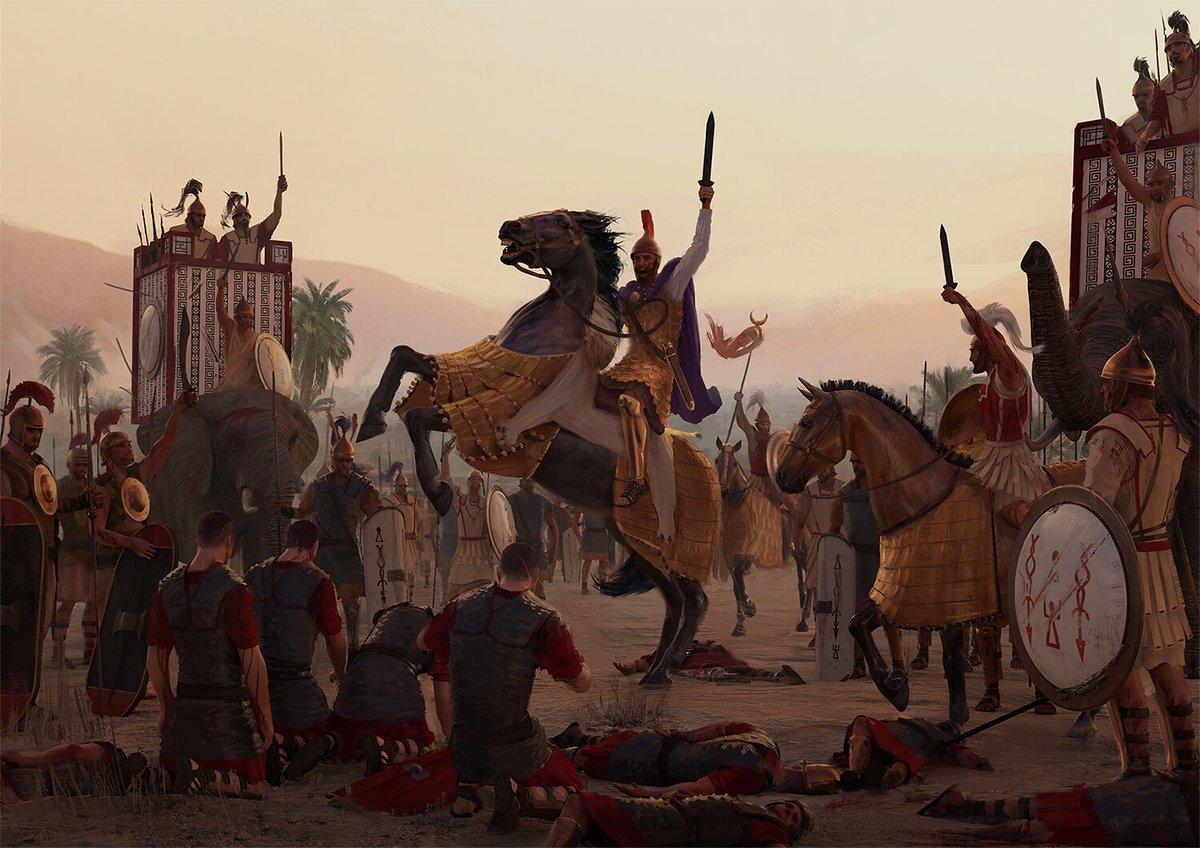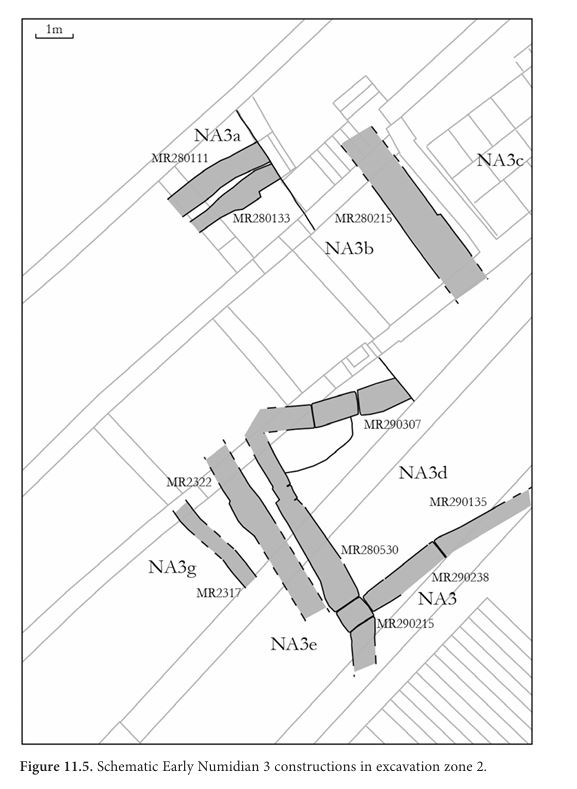I will not delve into the Carthaginian naval forces in this thread to keep it concise. However, I might consider creating a separate thread dedicated solely to it later.
Historically, Greco-Roman literature often assigned different stereotypes to Punics including the idea that they were not particularly inclined towards military matters. Indeed, it is evident that they had a distinct approach to warfare, possibly due to their focus on trade. 

The Phoenician colonial enterprise had primarily commercial objectives and took great care to avoid arousing hostility among the peoples they encountered. This is why early Phoenician settlements had a defensive nature with probably small militias but not proper armies yet. 

Over time, the demographic growth enabled them to assemble genuine citizen armies but in Africa, it gradually relied heavily on forced conscripted Libyans who lived under the authority of Carthage. However, other africans such as Numidians and Moors served as independent allies. 

Other Punic cities relied on Carthage for their defense as they did not possess their own armies. Carthage enforced the demolition of fortifications, dismantling of armies, and imposed tribute payments on these cities during its expansion in the 6th/5th cent. BC 

Mercenarism first emerged in Carthage during the second half of the 6th century BC through reforms implemented by the Magonids. However, it was not until the 4th century BC that this institution truly flourished. 

This shift reduced the reliance on phalanx formation and complex maneuvers, but equipment and tactics significantly improved throughout the 5th century, as evidenced by numerous victories in Sicily. 

It is worth noting that mercenarism had already existed in Phoenicia during the Late BA and IA. Phoenicians opted for early abandonment of citizen conscription, instead relying on recruiting mercenary forces from nomadic peoples such as the Hapiru and later from Anatolians. 

That is why Carthaginian citizens were not obligated to serve in the military, unlike their counterparts in the Greco-Roman world. Nevertheless, there were volunteers and the military leadership consisted of noble Carthaginian citizens who financially supported its maintenance. 

Limited knowledge exists regarding the military hierarchy, but on some stelae, the general is titled "rb mhnt" (rab mahanat), meaning "chief of the army", there is also reference to a "rb t'ht rb mhnt" as the second-in-command, and a logistics officer known as "rb (h)mstrt". 

Carthaginian generals, elected by the Senate or sometimes by the popular assembly, served indefinitely, fostering experienced professionals. The army also enlisted Libyo-Phoenician officers and generals, who saw promotion opportunities, like Muttines in the Second Punic War. 

Carthaginian commanders held political positions but by 300 BC were separated from civic authority. Appointed by the Council of 104, they faced strict monitoring and could be removed at any time. Non-compliance risked crucifixion. This system was effective and ensured loyalty. 

On a razor found in Carthage, a Carthaginian military officer is depicted wearing a lion's headdress. They could also wear Montefortino-style helmets with a colored crest (red, yellow, or white) and sometimes feathers. The sources also mention purple tunics and scale armor.




Unlike the Roman army, the Carthaginian army had few citizen soldiers. Their participation was primarily defensive and diminished over time, particularly in the 3rd century. For instance, Diodorus, says that out of an army of 70k men, only 2,5k were Carthaginian citizens. 

The Sacred Band, composed of 2500 young elite Carthaginian nobles, was an exception. They were well-equipped and met their demise at the Battle of the Crimisos in 341, where Carthaginians realized the effectiveness of Greek hoplites. 

The weaponry of the Sacred Band, as described by Plutarch, included iron breastplates, bronze helmets, large shields, and swords. After the battle of the Krimisos, a significant amount of bronze, iron, silvered, and gilt armor was seized from the fallen Carthaginians. 

The core of the Carthaginian army, particularly its heavy infantry, primarily consisted of Libyans from the interior of the Carthaginian territory. Later, under the Barcids, Iberians also formed a significant portion of the army. 

In addition, African troops from Punic cities like Utica and Hadrumetum (thus of Libyo-Phoenician origin) were present. These constituted the most stable and reliable forces compared to the mercenaries. 

The Libyans, described as the Carthaginian army's "elite" by Polybius, comprised the majority of their forces. They were deployed in Sicily, Sardinia, Iberia, and Italy. Initially, Libyan heavy infantry wore iron helmets, cuirasses, and round white shields. 

But also cuirasses made of organic material with metallic bosses (omphalatos). However, by the 4th cent. BC, Greek influences became more prominent, and they were equipped with greek helmets, greaves, linen cuirasses (linothorax), round shields (Aspis), short spears and swords.






The citizen and libyan infantry forces of Carthage used a variety of swords, including Celtic and Iberian types, as well as the Greek kopis. These swords were worn on a baldric, as the Carthaginians did not belt their tunics (same for Libyans).






More generally, Carthaginian stelae also depict muscular cuirasses, conical helmets commonly used in the Middle East , round shields, and shorter spears compared to those used by the Greeks. The main shield was the Greek aspis. Later, oval shields of the thyreos type appeared.






During the archaic period, the Carthaginian army possibly employed formations similar to the Assyrians. However, as Greek influence grew, they adopted phalanx formations. In the Second Punic War, Hannibal introduced the flexible Roman manipular formation.




END - Part II will be about the cavalry and mercenaries.
Artists : Giuseppe Rava, Ian Heath, Sandra Delgado, Richard Hook, Steve Noon, Johnny Shumate
Artists : Giuseppe Rava, Ian Heath, Sandra Delgado, Richard Hook, Steve Noon, Johnny Shumate
• • •
Missing some Tweet in this thread? You can try to
force a refresh










































